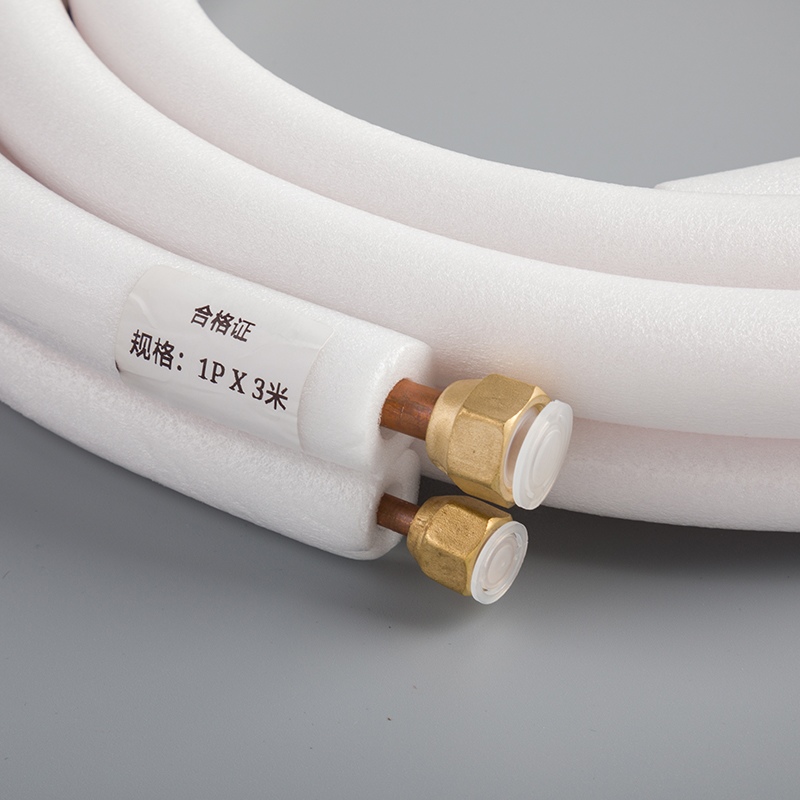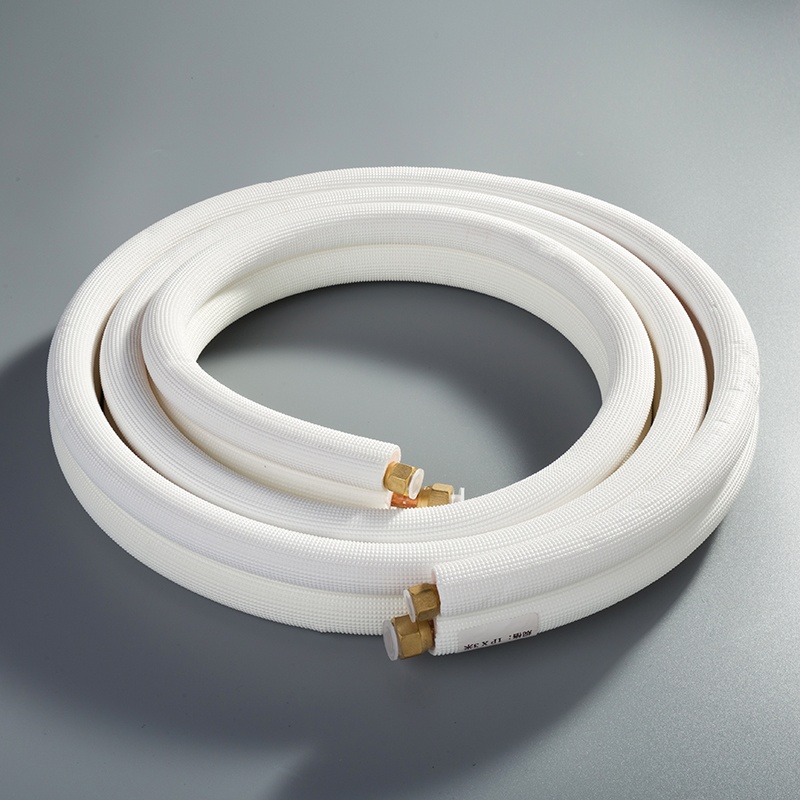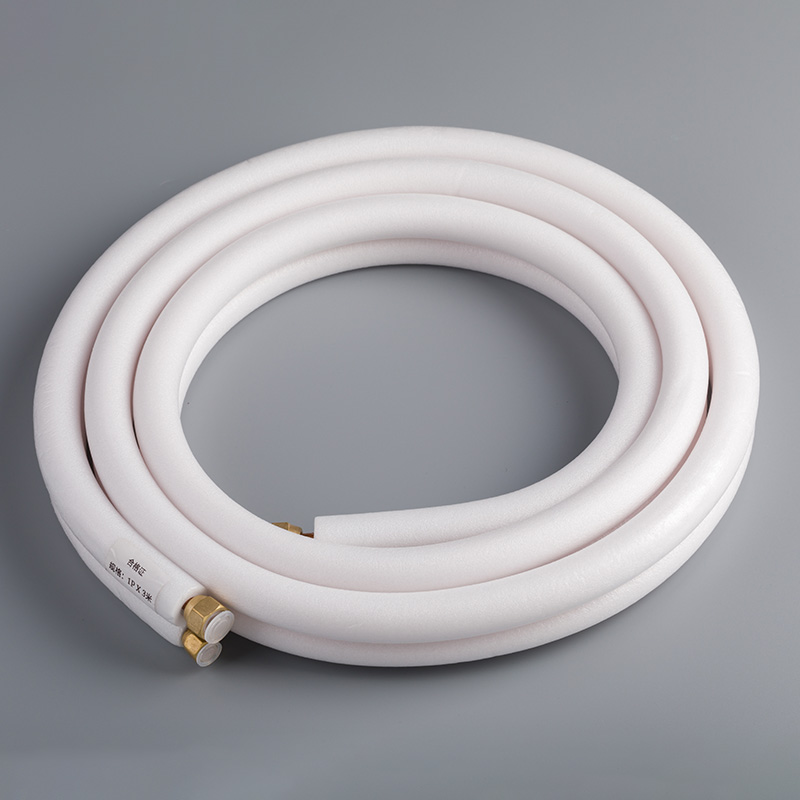Comparing Types of Air Conditioning Copper Pipes

Copper pipes play a crucial role in residential air conditioning systems, offering unparalleled durability, corrosion resistance, and efficient heat transfer properties. Homeowners and small commercial buildings widely utilize Type L and Type M copper pipes for their cooling needs. This blog post aims to write a comparison on comparing different types of air conditioning copper pipes, delving into the nuances of these copper pipe variants, and providing a comprehensive comparison to aid in decision-making for optimal system performance.
Types of Copper Pipes

Type K Copper Pipes
Type K copper pipes are known for their durability and strength. These pipes have the thickest walls among all copper pipe types, making them the most durable option available. They are commonly utilized in commercial plumbing, HVAC systems, sprinkler installations, and underground water mains. The thickness of Type K pipes contributes to their heavyweight nature and higher cost compared to other copper pipe variants.
Characteristics
Thickest walls among copper pipe types
Heaviest and most expensive option
Ideal for commercial plumbing and underground installations
Advantages
Exceptional durability
Suitable for high-pressure applications
Long-lasting performance in various systems
Disadvantages
Higher cost compared to other copper pipe types
Heavyweight may pose challenges during installation
Type L Copper Pipes
Type L copper pipes are versatile and commonly used in interior plumbing, fire protection, and certain HVAC applications. Available in both rigid and flexible forms, they can be easily integrated with sweat, compression, and flare fittings. Type L is considered the most common type of copper piping due to its wide range of applications.
Characteristics
Versatile usage in multiple applications
Available in rigid and flexible forms for different needs
Advantages
Widely applicable in interior plumbing systems
Compatible with various fittings for easy installation
Disadvantages
Less durable than Type K pipes but more durable than Type M pipes
Type M Copper Pipes
Type M copper pipes are thinner compared to Type L pipes and find common use in residential and commercial construction projects due to their cost-effectiveness. These pipes are suitable for general plumbing applications where high pressure is not a primary concern.
Characteristics
Thinner walls compared to Type L pipes
Cost-effective choice for general plumbing needs
Advantages
Economical option for residential and commercial projects
Ideal for low-pressure plumbing systems
Disadvantages
Not suitable for high-pressure applications
Less durable than both Type K and Type L pipes
Performance Considerations
Durability
Type K Copper Pipes
Type K copper pipes stand out for their exceptional durability, boasting the thickest walls among all copper pipe types. This thickness contributes to their robustness, making them a reliable choice for demanding applications.
In terms of longevity, Type K pipes excel due to their heavy-duty construction, ensuring prolonged service life even in high-pressure systems.
The durability of Type K copper pipes makes them ideal for critical installations where strength and resilience are paramount.
Type L Copper Pipes
When considering durability, Type L copper pipes offer a balanced approach. While not as thick-walled as Type K pipes, they provide sufficient strength for various applications.
Type L pipes strike a harmonious chord between durability and versatility, making them a popular choice for both residential and commercial projects.
The durability of Type L copper pipes makes them a dependable option for interior plumbing systems and other moderate-pressure environments.
Type M Copper Pipes
Among the different types, Type M copper pipes feature thinner walls but still maintain adequate durability for low-pressure plumbing needs.
Despite being thinner than Type K and Type L variants, Type M pipes offer cost-effective solutions without compromising on essential performance aspects.
The durability of Type M copper pipes suits them well for general plumbing applications where high pressure is not a primary concern.
Efficiency
Type K Copper Pipes
Efficiency-wise, Type K copper pipes shine in high-pressure scenarios due to their sturdy build and resistance to wear over time.
The efficiency of Type K pipes translates into consistent performance in demanding HVAC systems and industrial settings where reliability is crucial.
Utilizing Type K copper pipes ensures efficient heat transfer and fluid flow, contributing to the overall effectiveness of air conditioning systems.
Type L Copper Pipes
In terms of efficiency, Type L copper pipes offer a reliable balance between performance and adaptability across various installations.
The efficiency of Type L piping lies in its ability to cater to different fittings and configurations while maintaining optimal flow rates within air conditioning setups.
Choosing Type L copper pipes guarantees efficient operation in diverse HVAC applications without sacrificing quality or functionality.
Type M Copper Pipes
For applications prioritizing cost-effectiveness without compromising basic efficiency requirements, Type M copper pipes present an economical solution.
Despite being thinner-walled compared to other types, the efficiency of Type M piping suffices for low-pressure systems where affordability is key.
Opting for Type M copper pipes ensures efficient performance in light-duty air conditioning setups while keeping initial costs at bay.
Installation and Maintenance

Installation Process
Type K Copper Pipes
Begin the installation process by preparing the work area for Type K copper pipes, ensuring a clean and dry environment conducive to effective installation.
Cut the Type K copper pipes to the required lengths using a pipe cutter, ensuring precise measurements for seamless connections.
Utilize appropriate fittings such as solder joints or compression fittings to securely connect the Type K copper pipes, guaranteeing leak-free installations.
Type L Copper Pipes
For Type L copper pipes, start by organizing the necessary tools and materials for a smooth installation process, including flux, solder, and a propane torch.
Cut the Type L copper pipes accurately to fit the layout of the system, maintaining alignment and proper angles for efficient flow.
Employ sweat fittings or compression fittings to join sections of Type L copper pipes together securely, promoting reliable connections within the air conditioning system.
Type M Copper Pipes
When installing Type M copper pipes, prioritize cleanliness by deburring and cleaning the pipe ends thoroughly before assembly to prevent debris accumulation.
Trim the Type M copper pipes precisely according to project requirements, ensuring a snug fit without unnecessary bends or kinks that could impede flow.
Connect sections of Type M copper pipes using suitable methods like push-fit connectors or compression fittings, guaranteeing tight seals for optimal system performance.
Maintenance Requirements
Type K Copper Pipes
To maintain Type K copper pipes effectively, conduct regular inspections for signs of corrosion or leaks along the pipe length and at connection points.
Implement preventive measures such as applying protective coatings or insulating vulnerable areas to safeguard Type K copper pipes from external elements that may compromise their integrity.
Type L Copper Pipes
Regularly check Type L copper pipes for any indications of wear or damage that could lead to potential leaks or reduced efficiency in the air conditioning system.
Perform routine maintenance tasks like flushing out debris or sediment buildup within Type L copper pipes to ensure unobstructed fluid flow and optimal cooling performance.
Type M Copper Pipes
Maintain Type M copper pipes by monitoring water pressure levels regularly to prevent excessive strain on thinner-walled sections that may be more susceptible to damage.
Inspect joints and connections in Type M copper piping systems periodically to detect any loosening or deterioration that could compromise overall system functionality.
Cost Analysis
Initial Costs
Type K Copper Pipes
Type K copper pipes, known for their exceptional durability and strength, come with a higher initial cost due to the thicker walls and robust construction.
The initial investment in Type K copper pipes reflects the premium quality and longevity they offer in demanding applications like commercial plumbing and HVAC systems.
Opting for Type K copper pipes at the outset ensures a reliable and sturdy foundation for air conditioning systems, despite the higher upfront expenditure.
Type L Copper Pipes
Type L copper pipes, offering a balance between durability and versatility, present a moderate initial cost compared to other copper pipe types.
The initial expenses associated with Type L copper pipes align with their widespread usage in interior plumbing systems and fire protection installations.
Choosing Type L copper pipes initially provides a dependable solution for various applications without excessive financial strain.
Type M Copper Pipes
Type M copper pipes, being thinner-walled and cost-effective, boast the lowest initial costs among the different types of copper piping available.
Despite their thinner profile, Type M copper pipes deliver economical solutions for general plumbing needs in residential and commercial projects.
Selecting Type M copper pipes initially offers an affordable entry point into air conditioning systems while maintaining essential performance standards.
Long-term Costs
Type K Copper Pipes
Over the long term, Type K copper pipes demonstrate cost-effectiveness through their extended lifespan and minimal maintenance requirements.
The enduring quality of Type K copper pipes translates into reduced replacement or repair costs over time, justifying the initial investment made.
Investing in Type K copper pipes for air conditioning setups ensures long-term reliability and efficiency without significant additional expenses.
Type L Copper Pipes
In terms of long-term costs, Type L copper pipes prove to be a sustainable choice with balanced durability features that contribute to prolonged system integrity.
The lasting performance of Type L copper pipes minimizes future expenditures on replacements or upgrades, making them a prudent investment from inception.
Opting for Type L copper pipes guarantees continued operational efficiency in air conditioning systems without substantial long-term financial burdens.
Type M Copper Pipes
When considering long-term costs, Type M copper pipes offer budget-friendly benefits by requiring minimal upkeep and replacement expenses throughout their service life.
The economical nature of Type M copper piping results in favorable cost projections over time, making them an economical choice for sustained performance in light-duty applications.
Selecting Type M copper pipes ensures consistent functionality at an affordable cost point over the extended usage period.
Residential air-conditioning systems extensively utilize copper pipes for their durability, corrosion resistance, and efficient heat transfer properties. Type K pipes excel in high-pressure applications with exceptional durability, while Type L pipes offer versatility and moderate durability suitable for various installations. For cost-effective solutions in low-pressure systems, Type M pipes prove economical. Considering specific needs is crucial when selecting copper pipes to ensure optimal performance tailored to individual requirements.
Testimonials:
Various Experts
Copper pipes find extensive use in residential air-conditioning systems due to their durability, corrosion resistance, and efficient heat transfer properties.
Residential
Copper pipes find extensive use in residential air-conditioning systems due to their durability, corrosion resistance, and efficient heat transfer properties.
See Also
Benefits of Opting for Copper Tubing in Air Conditioning
The Impact of Pure Copper Tubing on Air Conditioning
The Essential Role of Pure Copper Tubing in Air Conditioning Efficiency
Key Advantages of Copper Tubing for Modern Air Conditioning
Uncovering Efficiency: Copper vs. Aluminum Tubing in Air Conditioning

